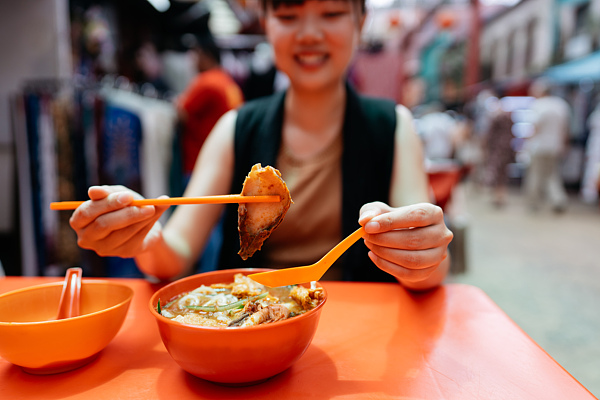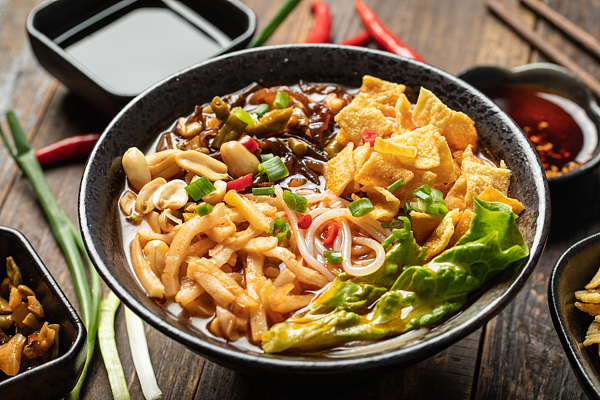

Rice noodles unite Guangxi and Southeast Asia

A woman enjoys rice noodles in Malaysia. [Photo/VCG]
Rice noodles play a crucial role in the daily lives of people in Guangxi Zhuang autonomous region in China, and Southeast Asia. In Guangxi, these noodles are a staple part of meals, enjoyed for breakfast or as quick snacks throughout the day. In Southeast Asia, rice noodles are integral to daily dining, offering a range of delicious options. Here are the similarities and differences between the rice noodles from Guangxi and Southeast Asia.
Similarities
1. Raw materials: Both Guangxi rice noodles and Southeast Asian rice noodles are predominantly made from rice as their main ingredient, resulting in a shared foundation despite distinct production methods.
2. Texture: Both varieties are loved for their chewy and smooth texture, appealing to palates across different regions.
3. Cooking methods: Both types can be prepared through boiling, stir-frying, or blanching, showcasing versatility to cater to diverse tastes and dietary preferences.

Guangxi Liuzhou luosifen noodles. [Photo/VCG]
Differences
1. Production process:
Guangxi rice noodles come in round and flat forms, with round noodles often extruded and flat ones such as Nanning's noodle variations made using wet rice flour.
Southeast Asian rice noodles reflect diverse production methods. For example, Indonesian dishes such as Sambal Terasi incorporate shrimp paste and chili, while Thai rice noodles may feature lemongrass and kaffir lime leaves.
2. Ingredients and seasonings
Guangxi rice noodles: Typically served with shredded meat, cilantro, snow peas, pickled beans, and daylily flowers in a rich yet non-greasy broth. Optional additions such as chili oil and vinegar enhance flavors based on personal preference.
Southeast Asian rice noodles: Varied ingredients exemplify their rich flavors. For instance, Vietnamese pho includes beef slices, bean sprouts, cilantro, and a clear flavorful broth.
3. Cultural background
Guangxi rice noodles: Rooted in local ethnic and regional culture, Guilin rice noodles exemplify the area's unique culinary traditions, featuring a distinctive sour and spicy profile.
Southeast Asian rice noodles: A fusion of cultural influences, Thai rice noodles draw inspiration from Chinese and Indian cuisines, while Indonesian rice noodles offer a unique local flavor profile.












